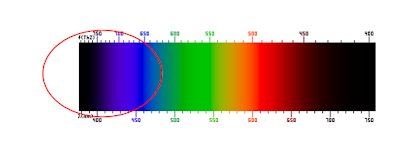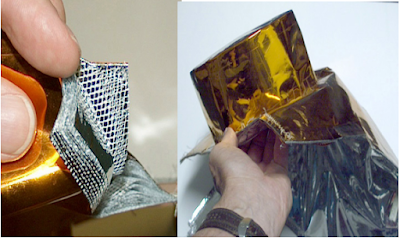MATERIALS FOR SPACE APPLICATIONS: A REVIEW
The importance of materials for Space applications
Space is a really harsh environment, not only for astronauts but also for materials. Radiations, atomic oxygen, outgassing, debris and micrometeorites, high and low temperatures are the main problems materials for Space applications have to deal with. For this reason, a structure that wants to stay in Space has to be made with some specific materials, such that it can guarantee mechanical and functional properties and protect astronauts.
Let's describe all these problems more in detail and see which are the main adopted solutions.
Radiation
Radiations represent the most famous problem in Space related to astronauts health. In fact, materials for Space applications have to be able to protect astronauts but also to maintain their mechanical and functional properties. Radiations are divided into two main categories: UV radiations and ionizing radiations.
UV radiation
UV radiation has a really detrimental effect on polymeric materials, breaking polymer chains and generating volatile matter. This, of course, degrades material mechanical properties but there is another important effect. This volatile matter (adhesives, binding agents etc.) can also deposit on other surfaces, decreasing the functional properties of that surfaces. For example, they could deposit on a solar panel surface decreasing their efficiency. This problem will be better explained in the sections dedicated to outgassing.
The main effects of UV radiations are:
- loss of surface toughness, due to chemical bonds breakage;
- Break of protective coatings and generation of surface crack;
Solutions for UV radiation
Ionizing radiation
Ionizing radiation is present especially in high orbits and is not a big problem in low orbits, where Earth magnetic field works as a shield preventing them. Ionizing radiations are really dangerous for materials (embrittlement in polymers), crew (human cells are fried) and electronics.
Solution for ionizing radiation
The most used solution is metal shielding, usually aluminium. Kapton also has good behaviour. Neoprene and Mylar cannot be used.
Atomic Oxygen
Atomic Oxygen represents a very particular condition that only materials for Space applications can encounter.
Atomic Oxygen forms in LEO orbits (Low Earth Orbits), where Oxygen molecules (O2) are photodissociated due to radiations at low wavelength, forming free Oxygen atoms (O). The impact against these oxygen atoms has high energy and takes to chemical bonds breakage, making the material releasing Hydrogen atoms and including Oxygen ones. As a result, the material surface oxidates, losing mechanical and functional properties. Also, during the oxidation reactions, the volatile matter is released. It can deposit on others surfaces like solar panel ones, making them losing efficiency.
Solutions for atomic Oxygen
The most used solutions against atomic Oxygen are:
- Protective films: metal oxides, silica, alumina, gold, silicon;
- Surface modification: introductions of metal ions or silicon inside the chemical composition;
- Inorganic fillers into polymers: metals, silica, alumina introduces in the polymers.
Outgassing
In Space we are in vacuum conditions. This means that the external pressure is null. This is another very peculiar and unusual condition that only materials for Space application are subjected to. The vacuum condition leads to the sublimation or evaporation of volatile matter, named outgassing
The most critical materials are hygroscopic materials, namely, materials that retain a consistent amount of water or materials in which plasticizers have to be used, like adhesive contained inside composite materials. The evaporation or sublimation leads to decreased mechanical (embrittlement) and functional properties, like changes in optical properties, reduction in conductivity or insulation.
As an example, we can take again the solar panels: inside them, silicon adhesive is present; this sublimes, reaches the surface and then condenses and deposit on it, due to the low temperatures of Space (almost -273 °C or 0 K). UV radiation makes this silicon polymerizing and creating a film on the surface. This film of polymerized silicon changes transmittance in the glass of solar cells and so the functional properties of solar panels, e.g, their efficiency decrease.
Solutions to outgassing
The main solutions consist in:
- Using not critical materials, like metals and ceramics.
- Avoiding proximity between materials affected by outgassing and sensitive components like solar panels or optical lenses;
- Ground treatment like Vacuum Baking: Vacuum baking is a procedure made on the ground in which a vacuum is applied to the material so that volatile matter leaves it. After this, the material is left for some time in a controlled environment and it absorbs back humidity. In this way, only the less detrimental water is absorbed and no other volatile matter will be present inside the material.
Micrometeorites and Debris
Solutions to micrometeorites and debris
The main solutions are:
- Mission path selection: we have to select the best path to avoid critical impacts, knowing which paths could be less or more critical;
- Redundancy: we can construct more structural part identical to each other, able to perform the same performance. In this way, if we lose a part due to an impact, we will have another part to accomplish the requirements.
- Multiwall or sandwich panels: we can construct our external structure using panels made by multiple walls. In this way, even if the more external wall gets a puncture during the impact, the debris or micrometeorite will be fragmented into smaller particles, decreasing their energy and distributing the impact on a larger area on the next wall, decreasing the stress on the material and avoiding its rupture. We know very well that to make a puncture in a ball is much more simple using a needle (very small surface, almost a point) rather than using a finger pad (larger contact surface). Here is the same: we distribute the impact on a larger surface, decreasing the possibility to get a puncture on the next wall. Sandwich panels work similarly and they are composed of two layers (usually made of a composite material like carbon or glass fibres) connected by an inner part made of aluminium that has a shape similar to that of a honeycomb.
Thermal protection
We are subjected to both high and low temperatures in Space applications.
When we are in shadow, temperatures get really low, reaching -273 °C (or 0 K). When we are exposed to Sun, its thermal radiation makes temperature increasing much more than on Earth surface, due to the absence of the atmosphere. But the real problem regarding high temperatures in Space applications takes place during the re-entry phase, where the aerodynamic friction with the atmospheric air makes the surface of the vehicle reaching temperatures near 2000 °C.
Solution for thermal protection: low temperatures
It's easy to understand that for low temperature protection the first requirement is to have thermal insulators to prevent astronaut the become ice into Space. These materials are expanded foams or polystyrene (used also for domestic solutions on Earth), multilayers or fibrous cover.
Solution for thermal protection: high temperatures
The protection from high temperature is a little bit tricky and here we find very peculiar materials for Space applications. As said before, high temperatures regard especially the re-entry phase, where really high temperatures (almost 2000 °C) are reached due to the friction of the atmospherical air.
A solution used on the upper surface of Space Shuttle consists of a mat shaped felt coated with ceramic fibres that have low conductivity (high insulation) and high emissivity (they emit a large part of absorbed heat). These mats were glued on the surface with silicon adhesive. On the lower surface of the Space Shuttle, ceramic fibres with amorphous silica are used. They have high absorption due to their high porosity. These solutions have some problems to solve: these are materials with lower CTE (Coefficient of Thermal Expansion) than the metal on which they are glued. This means that when heat comes, thermal protection and metal deform differently, generating stresses that can lead to the separation of the thermal protection. For this reason, very small mats are used and the gaps are filled with ceramic fibres.
Another example of really peculiar materials for Space applications is represented by ablative materials or ablatives.
Ablatives are composed of polymer resins and reinforcement fibres. When the material heats due to aerodynamic friction, the external part starts pyrolysis, dissipating heat through the released gases. When the pyrolyzed layer reaches a certain thickness, on the external part the char, a very porous layer, starts to create. Also, this char absorbs heat and then it's consumed by airflow, releasing an additional amount of heat. The main drawback of ablatives is their high thermal conductivity.
Conclusions on materials for Space application
In this article, I presented the main problems related to space and which are the most used solutions.
Radiations, atomic Oxygen, outgassing, micrometeorites and debris, high and low temperature bring to a lot of preliminary considerations during the choice of materials for Space applications. The most used materials against radiation, atomic oxygen and outgassing are metals. Multiwall and sandwich panels are the main choice to limit impact damages due to micrometeorites and debris. Finally, expanded foams and polystyrene are used for low temperature protection whereas ceramic materials and ablatives are used to dissipate heat.
For any doubt or consideration, please leave a comment!
ScienceFull.










Comments
Post a Comment